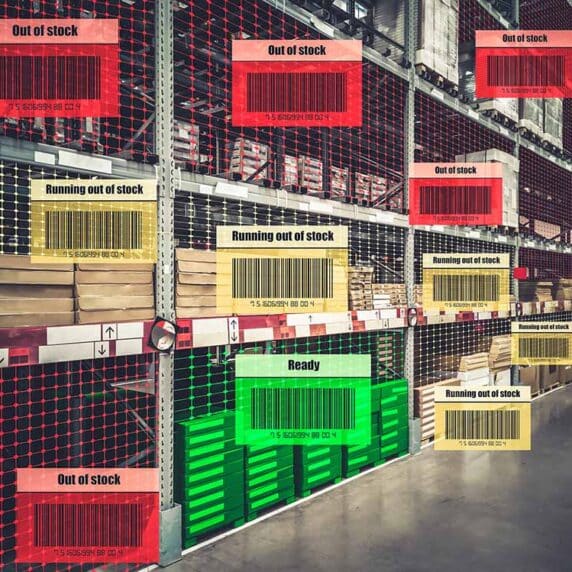Perpetual Inventory: Boost Manufacturing Decisions Fast
The manufacturing landscape has undergone a dramatic transformation in recent years. What was once a relatively predictable environment has become a complex maze of challenges: supply chain disruptions have become the norm rather than the exception, consumer preferences shift with unprecedented speed, and global competition has intensified to unprecedented levels. In this new reality, effective perpetual inventory management has emerged as a critical differentiator for manufacturers striving to optimize working capital, maximize profitability, and maintain customer satisfaction simultaneously.
The question becomes: how can manufacturers successfully navigate this volatile terrain? The answer lies in having access to crystal-clear, real-time data that provides complete visibility across the entire supply chain, enabling smart, decisive action when it matters most.
This is precisely where perpetual inventory systems deliver transformative value.
Perpetual Inventory Powers Smarter Manufacturing Decisions
In today’s fast-moving manufacturing world, unpredictability is a constant challenge. From fluctuating consumer demand to ongoing supply chain disruptions, manufacturers like you are under more pressure than ever to make faster, data-driven decisions.
Book your 15-minute inventory assessment today
Component 2: Multi-Echelon Approach to Dynamic Inventory Replenishment Optimization
Multi-Echelon Inventory Optimization (MEIO) identifies the most efficient and cost-effective points throughout the supply chain against variable demand levels. By utilizing probabilistic forecasting insights, organizations can strategically position inventory across their entire network. This data-driven approach enables precise inventory optimization of placement and quantities.
Perpetual inventory is a method of real-time tracking inventory changes as they occur. Unlike periodic inventory systems that update at scheduled intervals, perpetual inventory provides continuous visibility into stock levels, movements, and transactions across your supply chain.
The key to staying ahead of these challenges? Real-time, accurate data at your fingertips.That’s where perpetual inventory combined with data unification comes into play. This integration delivers visibility into stock levels, helping you anticipate demand shifts and stay agile in an unpredictable market.
The Challenge: Fragmented Data Across Enterprise Systems
One of the primary obstacles in inventory management and optimization is the prevalence of fragmented data across multiple enterprise systems. As your company grows — especially through mergers and acquisitions — you inevitably accumulate a patchwork of disparate systems (ERPs, WMS, shipping, and transportation platforms), each operating with its own data structures and business logic.
This technical fragmentation creates significant operational challenges. Without a unified view, manufacturers struggle to answer seemingly straightforward questions: What inventory do we actually have? Where is it located? When will components arrive? Which customers’ orders are at risk?
Even with a unified system, small discrepancies in core data (product codes, supplier details, or warehouse locations) can cause significant issues.
Worse yet, the bullwhip effect distorts demand signals as they flow through the supply chain, amplifying errors and creating a foggy picture of actual market demand.
Without accurate, unified data, it’s easy to miss the mark and make costly mistakes.
The Impact of Product Discrepancies
Without perpetual inventory, you’re forced to rely on outdated or inconsistent data, which leads to poor decision-making. You might overproduce low-demand products or underproduce high-demand ones due to missing or delayed signals.
Excess inventory ties up working capital, which could be used more efficiently elsewhere. In fact, U.S. Census Bureau data reveals that manufacturer and trade inventories rose 2.3% YoY as of January 2025, indicating that many companies are still overstocked, paying for inventory they don’t need.
On the flip side, a system showing that raw materials are available when they’re not, can lead to machine downtime, stockouts, and delayed shipments—resulting in lost sales and customer dissatisfaction.
Real-World Consequences of Poor Inventory Management
On the flip side, a system showing that raw materials are available when they’re not, can lead to machine downtime, stockouts, and delayed shipments—resulting in lost sales and customer dissatisfaction.
When inventory systems fail to provide accurate, real-time information, the consequences can be severe:
- Production delays: Without visibility into raw material availability, production schedules get disrupted.
- Increased carrying costs: Excess inventory accumulates storage costs, insurance, and potential obsolescence.
- Cash flow constraints: Capital tied up in unnecessary inventory can’t be used for growth or innovation.
- Lost sales opportunities: Stockouts lead to unfulfilled orders and potentially lost customers.
- Inaccurate forecasting: Without real-time data, future planning becomes a guessing game.
In this environment, manufacturers need more than just inventory tracking—they need intelligent inventory management systems that provide actionable insights.
Perpetual Inventory + Unified Data = Supply Chain Clarity
To ensure you always have the right products at the right time, you need a unified, real-time view of inventory across all systems. A data unification platform consolidates live data from ERPs, WMS, and other systems into one trusted source of truth, ensuring everyone is on the same page.
With this, you can:
- Quickly spot and resolve inventory issues such as stockouts or excess stock.
- Strengthen supplier relationships with clear visibility into performance.
- Meet customer demands by maintaining optimal stock levels and improving order fulfillment rates.
- Make proactive rather than reactive inventory decisions.
- Align inventory investments with actual market demand.
Real-time data gives you the agility to respond faster and more accurately to changing conditions.

Turning Data into Action — and a Competitive Advantage
When you integrate perpetual inventory signals into a unified platform, you gain not only better data but also actionable insights. This enhances agility and accuracy, allowing you to make confident decisions and drive better outcomes.
Research shows that companies with high-performing supply chains are nearly 80% more likely to outperform their industry peers in revenue growth. This is no coincidence—better data leads to lower costs, reduced waste, and stronger relationships with both suppliers and customers.
How Perpetual Inventory Transforms Manufacturing Operations
The implementation of perpetual inventory systems creates a ripple effect of improvements across manufacturing operations:
- Enhanced production planning: With real-time visibility into materials and components, production schedules can be optimized to minimize downtime.
- Streamlined procurement: Automated reordering based on actual usage prevents both stockouts and overstock situations.
- Improved cash flow management: By maintaining optimal inventory levels, you can free up capital for strategic investments.
- Better customer service: Accurate fulfillment timelines lead to improved customer satisfaction and retention.
- Data-driven decision making: Historical inventory patterns help you refine forecasting models and improve planning accuracy.
At the end of the day, perpetual inventory is about more than just knowing what’s on your shelves. It’s about empowering you to make smarter, quicker decisions at every step of your supply chain.
Implementing a Successful Perpetual Inventory System
For manufacturers looking to implement or improve their perpetual inventory systems, consider these key steps:
- Audit current systems: Identify all data sources that affect inventory management.
- Standardize nomenclature: Ensure consistent product codes, units of measure, and location identifiers.
- Invest in integration: Select technology solutions that can bridge disparate systems.
- Train personnel: Ensure all stakeholders understand the importance of data accuracy.
- Establish KPIs: Define clear metrics to measure inventory performance.
- Continuous improvement: Regularly review and refine your inventory management processes.
The investment in perpetual inventory systems pays dividends through improved operational efficiency, reduced costs, and enhanced customer satisfaction.
Ready to Optimize Your Inventory?
ToolsGroup Data Hub delivers real-time, enterprise-wide visibility, giving you a single, unified source of truth across your entire supply chain.
In this ever-changing manufacturing landscape, perpetual inventory isn’t just a good-to-have—it’s essential for survival and growth. By providing the clarity needed to make informed decisions quickly, perpetual inventory systems help manufacturers stay competitive, agile, and profitable.






